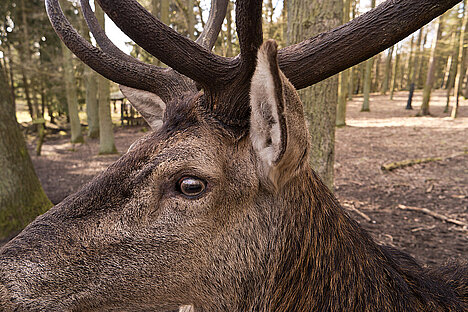Deer ears

Are you looking for a natural and healthy snack for your dog? Then you may have heard of deer ears. Deer ears are dried ears from deer that are offered as a chew for dogs. But what are the advantages and disadvantages of deer ears for dogs? And what should you look out for when buying and feeding them? In this article, you'll find out everything you need to know about deer ears for dogs.
What are deer ears?
Deer ears are the dried ears of deer that are used as a chew for dogs. Deer ears consist of cartilage and fur and have a hard and chewy consistency. They are usually between 10 and 20 cm long and weigh between 10 and 40 g. Deer ears are usually dried without additives or preservatives and are therefore a purely natural product.
What are the benefits of deer ears for dogs?
Deer ears have several benefits for dogs that make them a popular snack. Here are some of them:
- Deer ears are low in fat and calories. They are therefore also suitable for overweight or sensitive dogs.
- Deer ears are hypoallergenic and well tolerated. They contain no gluten, lactose or cereals and are therefore also suitable for allergic or intolerant dogs.
- Deer ears promote dental health. Chewing cleans the teeth, reduces tartar and massages the gums.
- Deer ears aid digestion. They contain fiber, which stimulates the intestinal flora and improves the consistency of faeces.
- Deer ears provide activity. They offer the dog a long chewing time and satisfy its natural urge to chew.
What are the disadvantages of deer ears for dogs?
Deer ears also have some disadvantages for dogs that you should be aware of. Here are some of them:
- Deer ears can cause splintering or injury. If the dog chews too hastily or bites off too large pieces, sharp edges can form that can injure the mouth or gastrointestinal tract.
- Deer ears can contain parasites or bacteria. If the deer ears have not been sufficiently dried or stored, they may be contaminated with parasites or bacteria that can harm the dog.
- Deer ears can cause nausea or diarrhea. If the dog is not used to deer ears or eats too many of them, it can develop gastrointestinal problems.
What should you look out for when buying and feeding deer ears?
To reap the benefits of deer ears for your dog and avoid the disadvantages, you should follow a few tips when buying and feeding them:
- Only buy high-quality deer ears from trustworthy suppliers. Make sure that the deer ears come from species-appropriate husbandry, have been carefully dried and do not contain any additives.
- Store the deer ears in a dry and cool place. Avoid direct sunlight or moisture to prevent mold growth.
- Introduce your dog to deer ears slowly. Start with small amounts and observe your dog's tolerance.
- Do not feed your dog more than one or two deer ears per week. Do not exceed 10% of your dog's daily energy requirement with snacks.
- Supervise your dog when chewing deer ears.
Deer ears are dried deer ears that serve as a low-fat and low-calorie chew for dogs. They promote dental health, digestion and provide activity. However, they can splinter, contain parasites or cause gastrointestinal problems. When buying, pay attention to quality and species-appropriate origin, store them in a dry and cool place, and accustom your dog to them slowly. Give no more than one or two deer ears per week and supervise chewing.
If you notice any signs of hypersensitivity or poisoning in your dog, you should see your vet immediately. We are not a substitute for a vet, but we try to be as accurate as possible. Every dog reacts differently and we recommend you get a second opinion or consult your vet if in doubt.
Stay healthy and take good care of your four-legged friend!😊